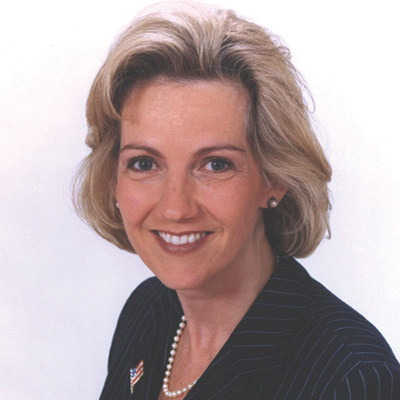Matthew Westhoff and his two partners have a successful practice and want to expand it by letting other advisors plug into their operation. How can they structure a competitive contract and attract qualified candidates?
Westhoff and his partners started MBM Wealth Consultants in 2009. Located in Town & Country, Mo., they transitioned to a hybrid business model in 2013 and now have $50 million in assets. They work as a team, so all clients belong to the firm and revenue is divided evenly.
To grow, they are looking to add advisors to their network. Their ideal candidate is an advisor “who doesn’t want to be a business owner but enjoys being a financial planner,” says Westhoff.
To that end, they have produced manuals with step-by-step instructions for every aspect of the business, from compliance to social media. The idea is to equip the advisors with the right tools to run the business so they can concentrate on growing their book. “Chances are, most of what the advisor has been doing is not time-efficient, and we have a system to take it off their plate,” he says.
In return for access to those systems and procedures, as well as support staff and technology, the advisors would pay the firm a percentage of their revenues.
So far, the partners haven’t had much luck. They’ve brought on board one advisor, a referral from a wholesaler. Their target is an advisor with $10-$15 million in assets in their late 40s or early 50s trying to grow to $25 million or more—solo practitioners who are stuck because they don’t have time to take care of their clients, find new accounts, and run a business.
“It’s a slow process, and we’re trying to figure out if there’s a way to expedite that and communicate the value we bring,” he says.
Here, a panel of experts offer their advice:
Matt Lynch,
Principal, Tiburon Strategic Advisors

I don’t think the firm has achieved the critical mass needed to try this approach. To attract established advisors because the partners have procedures that differentiate them from anyone else—I believe the firm is too small to be competitive on that basis. I would say they’re in growth mode and they need to focus on building out the existing business.
With that in mind, they would be far better off putting their time and effort and capital into adding a junior advisor who could help them bring additional clients to the firm. The person would get a salary, work for the firm, and support growth, while continuing to maintain that client-service experience and team-based approach. The partners would benefit from having an employee who follows their processes and helps build long-term value in the firm.
Firms are having good luck finding junior advisors to come in as employees. A lot of the kids graduating from (financial advisory) programs, they’re technically sharp, and they want to enter an existing business.
If the partners want to take their resources and be in the business of recruiting advisors so they make money as the recruits build their own practices, that’s a very different business from continuing to build out their advisory book. They’re two completely different models. It would mean competing with the big firms that are directly
recruiting advisors.
Hellen Davis,
CEO and co-founder, Indaba Global
 They have to build a business case that proves what they’re offering is worth it. If I’m 40 or 50, I’ve heard it all before. They have to think, “Why would someone that age with a somewhat successful practice want to give away money?” They should detail exactly what the advisors will get in the new arrangement vs. what they’re getting right now, and why it will help them grow their business.
They have to build a business case that proves what they’re offering is worth it. If I’m 40 or 50, I’ve heard it all before. They have to think, “Why would someone that age with a somewhat successful practice want to give away money?” They should detail exactly what the advisors will get in the new arrangement vs. what they’re getting right now, and why it will help them grow their business.
And they have to provide marketing and leads. The thing most people have a really hard time with is bringing in leads. That’s why it’s of so much value.
I would look for advisors in their 50s who are thinking about retiring in 10 years and say, “You’ve got $15 million in assets and you’re working 60 hours a week. We can help you reduce that to 40.” This means people who don’t want to work like crazy anymore, who are considering semi-retirement. The pitch would be, “Join us, use our system, and in a few years when you want to spend more time playing golf, you can do it.”
Brandon Odell,
Director of business consulting, The Ensemble Practice
 It’s been hard for them to find advisors who have experience and are willing to plug into their model. I think that’s for two reasons. The first is the pool of people out there. It’s difficult to find advisors who have some experience and success, who have demonstrated the ability to grow, and who at the same time would want to affiliate with another firm. There isn’t enough supply of that type of individual. Second, they’re sending conflicting signals. They’re looking for someone who wants to be a business owner but enjoys being a financial planner. But they also want recruits who are entrepreneurial enough to want to grow their practice by another $15 million in assets.
It’s been hard for them to find advisors who have experience and are willing to plug into their model. I think that’s for two reasons. The first is the pool of people out there. It’s difficult to find advisors who have some experience and success, who have demonstrated the ability to grow, and who at the same time would want to affiliate with another firm. There isn’t enough supply of that type of individual. Second, they’re sending conflicting signals. They’re looking for someone who wants to be a business owner but enjoys being a financial planner. But they also want recruits who are entrepreneurial enough to want to grow their practice by another $15 million in assets.
There are two models here and they need to be reconciled. First is the team they’ve been building, and the second is essentially a recruiting and production model focused on providing resources to other advisors. But to be a recruiter, it means entering a competitive market segment with very large, well-capitalized firms. They’d need to attract practices that are smaller than the usual ones of interest to these competitors, yet also have growth potential. So again, it’s a narrow corridor they’re walking.
To attract those people who are below the radar of the larger firms, they need to have a team doing nothing but talking to advisors all day long, cold calling and going on the road. And that means additional overhead costs.
The way RIAs grow at this stage is usually to look for more advisors who will be on a salary and be part of the firm. The owner takes more of a risk in developing the individuals, but benefits from their growth. Or they might come across advisors who look at the firm’s size and say, “I want to be a partner.” Another partner would give them critical mass while they aggressively work on organic growth.
Anne Field is a veteran business journalist with areas of expertise in small business and management, in addition to triple-bottom line companies. Read more of her work at www.annefieldonline.com.


